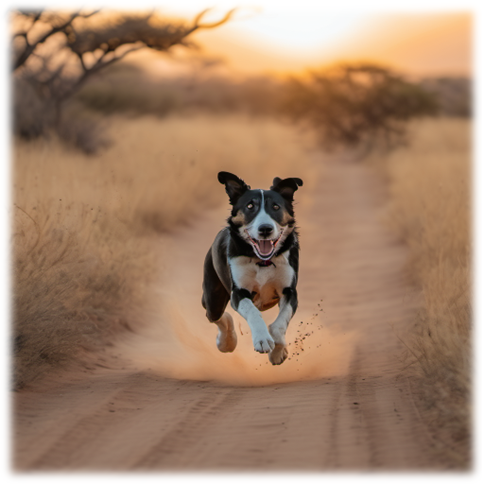
Caring for your old dog (or cat!) in winter
Share
Now that winter is squarely upon us, our older animals deserve a bit more care and pampering to get them through the cold nights.
Animals, just as people, have challenges when they become older. You may notice that they start to move slower, are a bit stiffer when getting up, and may no longer want to jump on the bed. Some dogs may shiver and shake, or just look really unhappy with life!
As dogs, cats, and all our other furry friends get older, the wear and tear on their joints are one of the things that take their toll. Over many years, wear and tear of the joints lead to injury to joint surfaces. This is associated with pain and inflammation, and this can affect the movement of the animal. In winter, the pain associated with arthritis gets worse for animals (and people!).
Here are three ways to help your older animal be as comfortable as possible in the cold winter days and nights:
1. Think soft and thick
We often think that a blanket on the floor is enough to keep our dogs comfy. But imagine the pressure that a big old Boerboel of 70kg places on his joints when the only thing between him and the hard floor is a single piece of cloth! Even for smaller animals, hard surfaces that create pressure points on the body are very uncomfortable. So the first step to smiling through winter is to be sure that your dog has a thick and soft surface to sleep on.
For a very comfortable option, check out our special on this lounge-walled bed from Rogz, or browse any of our other cat or dog beds.
Be sure to select an option that can take the weight of your dog. When lying down, your big old boy (or girl) must have at least 5cm of mattress between its body and the floor to be sure that there is no pressure on the bones and joints.
2. Focus on warmth
To make wintertime easier for your pet, you need to keep them warm and comfortable. Now that you have sorted the bed, make sure that it is placed in the warmest area that you have in the house – not too hot, but comfortably warm. Also add a blanket or two, or invest in an igloo-style bed for those animals that fit!
Inside or out? We are all advised to keep (at least one) dog inside, to be your early warning against intruders. BUT if you need to keep Wagter or Butch outside, make their space as warm as possible. Invest in a good kennel (preferably one with a cover over the entrance), and place the kennel out of the rain and wind – ideally in an outside room, garage, or shed. If that is not possible, find a place in a corner or under a roof, and remember to turn the entrance in such a way that it catches the least wind or rain.
You can also consider options that are lifted off the floor – it is a great way to keep cold off the body, and will also work well in the rainy season as a dry spot for your outside dogs.
3. Support the joints
A first step towards comfort is to support your animal’s joints to be in the best shape that it can be. Joint supplements provide all the necessary ingredients that allows the joint surfaces (cartilage) to repair, to prevent degradation, and to suppress inflammation. You will see active ingredients such as glucosamine, chondroitin, or MSM (methylsulfonylmethane). Help your pet get through winter with our range of supplements.
Supplements can take 4-6 weeks to show results, but you are then sure to see improved movement and a happier pet! Don’t stop with the supplement once you see improvement, you need to keep the levels up to sustain the improvement. Other options are specialized foods that focus on joint health, while also providing all the other ingredients that keep your older dog in shape – speak to your veterinarian for the best choice for your animal.
In summary: we want to do the best we can for our older dogs - within budget, of course! If you need to prioritise, start with a soft and thick sleeping area, make it as warm as possible, and consider nutritional supplements to keep joints in good health.